‘O monstrous:’ Claude Barma’s French 1962 TV Othello
Sarah Hatchuel & Nathalie Vienne-Guerrin [1]
1 Claude Barma’s black-and-white TV film Othello used a translation by Georges Neveux and was broadcast in France on Tuesday 23 January 1962 at 8:30 pm, at a time when French television aired one channel only and, therefore, involved captive spectatorship. Only 17% of the French households had a television set at the time (40 TV sets per 1,000 inhabitants), but all the people who watched TV that night saw this version of Othello. [2] Just like the other TV films of the period, it did not leave much of a trace in the collective memory. Our aim is to exhume this specific TV film out of the Inathèque archive [3] and examine it as a case in point that illuminates the issue of French adaptation in the sixties through the exploration of the mechanisms of remediation and re-appropriation. We will show that what characterizes this Othello is its hybrid or “monstrous” nature, and will attempt to demonstrate that this French televisual item, and the vision of Othello it conveys, can hardly be broached without an American cinematic item — Orson Welles’s 1952 filmic adaptation of Othello. Moreover, this film has to be considered within the particular context of the sixties in France and the events taking place in its Algerian colony, which gave the play’s racial issues a specific French coloration.
I. When Othello makes the sensational news
2 “In a fit of jealousy, Daniel Sorano will strangle Francine Bergé tonight.” [4] With this sensational headline, the weekly TV magazine Télé 7 Jours (20-26 January 1962) announced the broadcast of Claude Barma’s Othello (see Fig. 1). The headline conflated actors and characters, or at least blurred the line between them, as Daniel Sorano was the actor playing Othello and Francine Bergé the actress impersonating Desdemona.
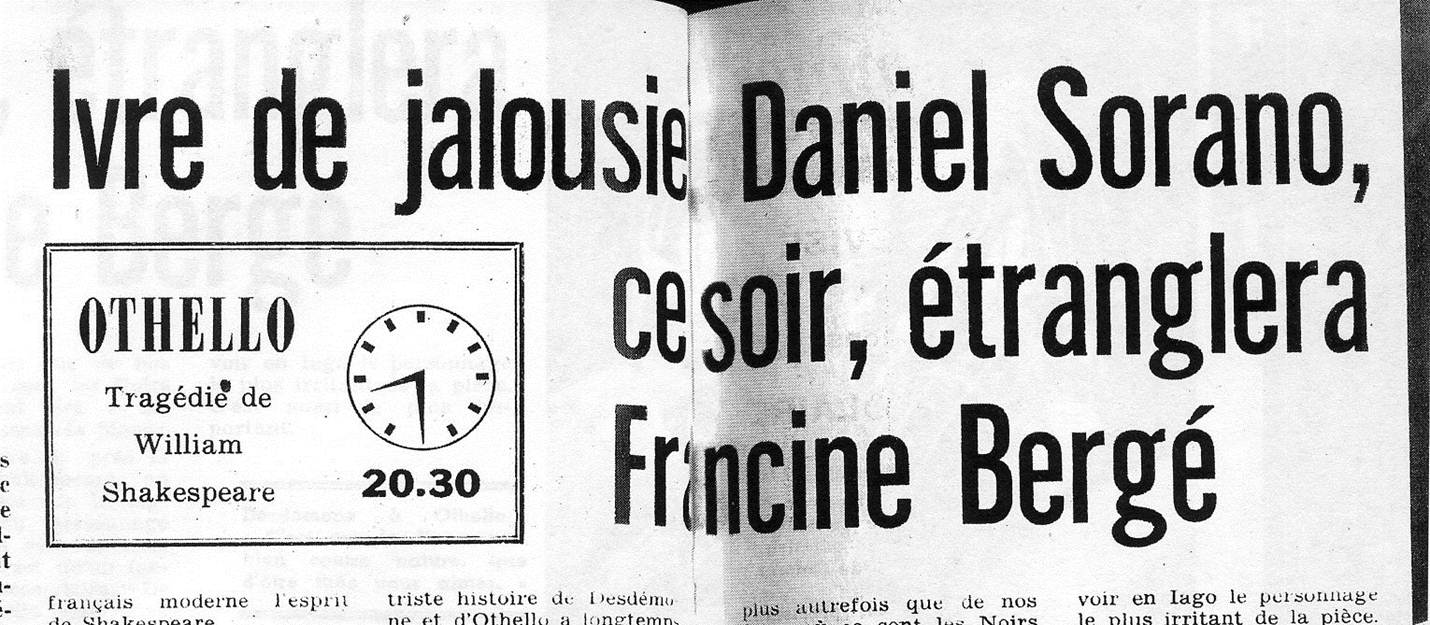

Fig. 1. The Télé 7 Jours headlines in 1962
3 The same blurring effect could be found in the photographs of stage actors performing Shakespearean roles in the nineteenth century, [5] revealing that the actors’ names somehow prevailed over the Shakespearean characters. Through the citation of actors that were famous at the time, the writer of the Télé 7 Jours article may have thought that more spectators would be attracted by the TV programme. Daniel Sorano was a fashionable actor in the fifties and had recently played in Macbeth (1959, dir. Claude Barma) [6] and Cyrano of Bergerac (1960, dir. Claude Barma) [7] before embodying Othello. In an interview published after the broadcast of Othello, Claude Barma asserted his approach of television:
For me, the art of television (but can we talk of art?) means above all getting people interested, getting them hooked, forcing them to watch and listen. [8]
4 Casting well-known actors in the main parts — Daniel Sorano, Francine Bergé, but also Jean Topart [9] with his bewitching voice, in the role of Iago — is part of this strategy of “getting them hooked.” The headline “Wild with jealousy, Daniel Sorano will strangle Francine Bergé tonight” implicitly conveys the reading of Othello as a domestic tragedy and turns the story of the play into mere local news. In the magazine, the use of the future tense and of the time marker “tonight” reveals the nature of the televisual object under scrutiny since the murder of Desdemona, indeed, happened on Tuesday 23 January at night: the TV film was mostly shot and broadcast live in the tradition of what was called the “dramatiques.” [10] Only the beginning had been recorded in advance. Claude Barma explained his choice in the following terms:
When people come home from work, they sometimes want to have fun, to watch something funny. And they are given Othello. So you have to get them hooked. They must be caught and taken by the play from the first scenes onwards. […] From time to time, you need to punch them awake. Live drama is the way. A live TV program is often less good technically but it is much more intense. It’s frightening, but it’s fascinating. The actor doesn’t see the audience but he knows it’s there. And he then plays like a trapeze artist without a net. Because he takes risks, his acting is probably better. Live broadcasting is like a boxing match — you either lose or win the night. And the victory or the fall is final. [11]
5 In its hybrid form — some bits live, some bits recorded — this televised Othello shares some features with stage performance. Daniel Sorano claimed that only live filming allowed him to reach the necessary degree of violence in the scene in which he slaps Desdemona:
There is only one scene in this play that upsets me. It’s the moment when Othello scathingly chases his wife away in front of everyone. I can’t seem to render this kind of cruelty. This is why I’m happy to perform the play live. We’ve only shot the beginning and the rest will be broadcast live. I believe that the progressive unfolding of the action will help me reach the cruelty of the scene. [12]
6 The live filming explains why the cinematic effects are kept to a minimum. Except for the opening shot (see Fig. 2) which recalls the lions from the film Battleship Potempkin (dir. Sergei Eisenstein, 1925), plants a grand Venitian setting and suggests intense drama, except for Iago’s monologues filmed in close-up (see Fig. 3) while the villain looks right into the camera to take the spectators as witnesses or accomplices, except for a sound flashback which has Othello mentally hear Brabantio’s prophecy again (“She has deceived her father, and may thee,” I.3.292), [13] the mise-en-scène is essentially stagey. The trial scene in Act I is particularly indebted to theatre and its art of blocking, that is to say placing the actors on the set in a meaningful way (see Fig. 4).
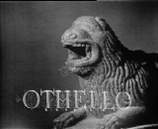

Fig. 2. The opening shot from Barma’s Othello marking the Venitian setting
as well as recalling Eisenstein’s Battleship Potempkin
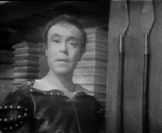
Fig. 3. Iago (Jean Topart) facing the camera
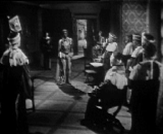
Fig. 4. The stagey mise-en-scène at the Venitian court
7 Because the film wished to make the headlines, the TV film used a bold translation-adaptation by Georges Neveux, [14] moving away from the influence of the eighteenth-century adaptations by Jean-François Ducis, which were still widespread in the Shakespearean culture of the time, if one is to believe Jean-François Chabrun’s piece in Télé 7 Jours (20-26 January 1962). As an introduction to Claude Barma’s film, Chabrun wrote:
At the time when Jean-François Ducis was about to present Othello, the Moor of Venice — a play written two hundred years before by William Shakespeare — before a French audience for the first time on 26 November 1792, he was really afraid. And he was right to be. The theatre pundits, by then, liked Marivaux or Beaumarchais, with their sharp dialogues, their elegant feelings and delicate, lacy “moralities.” Ducis knew well that the public would not bear the characters’ brutality imagined by the playwright we now consider as the greatest dramatic genius of all time. It’s one thing to justify the fact that Othello, as a black man, leads the troops of the Venetian republic and even kills […], but quite another to explain how Iago the villain can be so wicked […]. Good Ducis thus took great pains to expunge the play […]. However, Ducis’s adaptation will not be broadcast tonight on TV — but Georges Neveux’s translation, which endeavours to translate the spirit of Shakespeare in modern French as faithfully as possible. [15]
8 In his adaptation, Ducis notably never reveals that Iago is the villain, except at the very end, [16] and his version offers a choice between two denouements, a sad and a happy one. [17] We will see that Neveux’s translation does not leave this choice to the spectator, far from it, but it is striking to notice how Ducis, [18] in the sixties, is still an important landmark in the reflections on adaptation. The motivation to deliver a version of Shakespeare’s text that is not censored or purged goes hand in hand with the drive to turn the play into popular entertainment. This adaptation does not stem from Ducis’s — it stems from Orson Welles’s.
II. Enmeshed in the nets of Orson Welles?
9 At first sight, there cannot be much in common between Welles’s film version and Barma’s TV version. The former is a cinematographic masterpiece, while the latter is a long-forgotten hybrid television version, half-way between theatre and television. Yet beyond these conspicuous differences, one cannot but perceive the ghost of Welles’s film while watching Barma’s version.
10 While Ducis’s translation-adaptation never identified Iago as the villain until the very end, in the Neveux/Barma version, the spectator knows from the very first seconds of the film who Iago is. When, at the beginning, a voice-over can be heard, calling Iago a “Spartan dog” and forcing him to “Look on the tragic loading of this bed” [19] as his own “work” (V.2.371-73), it is difficult not to identify the influence of Orson Welles’s film which also started with the end of the play, its opening shots showing Desdemona and Othello lying dead on their bed, as well as Iago in a cage (see Fig. 5). The same narrative reversal is at work in Barma’s film which starts with shots of Desdemona’s still face (see Fig. 6) and of the mythical couple’s joint hands.

Fig. 5. Iago (Micheál MacLiammóirin) in a cage at the beginning of Welles’s film
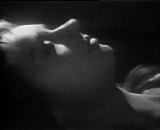
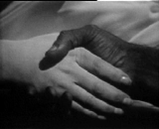
Fig. 6. Desdemona’s face and the couple’s joint hands
11 The rest of the story is, therefore, turned into a giant flashback and the film shifts its mode “from the narrative to the analytical.” [20] There is no longer any suspense regarding the end of the story; we already know from the start that, indeed, “Daniel Sorano will strangle Francine Bergé.” Georges Neveux’s text conveys a metadramatic or metafilmic commentary when Iago, in his first meeting with Roderigo, says, “Le Prologue était violent, tu verras, la suite ressemblera au Prologue” which can be translated as “The Prologue was violent and, you’ll see, the rest will look like the Prologue,” an equivalent of Shakespeare’s “It was a violent commencement in her, and thou shalt see an answerable sequestration” (I.3.337-38), and which has been translated by Jean-Michel Déprats as “le début fut violent, violente sera la rupture.” [21] This line which, in Shakespeare’s text, comments on the relationship between Desdemona and Othello, becomes, in a filmic work that starts with images of death, a commentary on the film itself.
12 Beyond the structural parallel between the two films, Claude Barma seems to have borrowed from Welles the motif of the cage. Kenneth S. Rothwell notes that it was Welles’s wish to use the metaphor of entrapment and framing:
According to Welles’s own account, the movie’s design stemmed from Iago’s delight on schemes of entrapment […]. The resulting foray into entrapment and fear carries the move into the realm of film noir. [22]
13 What Rothwell calls the “locus classicus” of the whole film [23] — the motif of the cage and trap — invades Barma’s Othello ten years or so later. The web “wherein [Iago] shall enmesh them all” (II.3.336) is literalized in the very numerous grids that can be seen throughout the film, what Anthony Davies calls, in Welles’s film, “the grill and bar motif.” [24]
14 In Barma’s Othello, the set is designed like a boat’s hull and includes what looks like a succession of prison bars; the opening and closing of grills organize the comings and goings of the characters, who sometimes seem to arrive out of a boat’s hold (see Fig. 7); the sails that float above Desdemona resemble cobwebs ready to catch the fly-like characters (see Fig. 8); the grid becomes a screen through which Othello attends, from above, the conversation staged by Iago between Cassio and Bianca (see Fig. 9), and it is the same grid which closes on Roderigo when he is trapped by Iago (see Fig. 10). Even Othello’s costume (see Fig. 11) in Barma’s film recalls Welles’s metaphor of the net (see Fig. 12). Characters become rats trapped on a naval laboratory led by Iago. The ground with its interwoven geometrical shapes contributes to enriching this labyrinthine aesthetics (see Fig. 13), for which Welles’s film is also known. The grid or matrix effect is finally generated by the presence of big squares of cloth which seem to evoke as many magnified versions of Desdemona’s handkerchief (see Fig. 14) as Othello’s sick obsession and wild fantasies mentally produce, as if the handkerchief had become the main point of focus in Othello’s mind and for the camera.
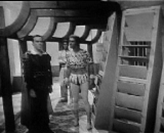
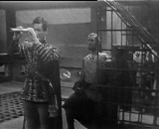
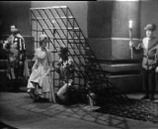
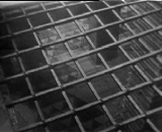
Fig. 7. Prison bars in Barma’s TV version
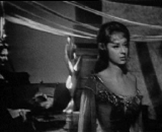
Fig. 8. Sails as nets above Desdemona
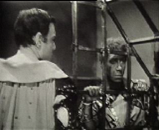
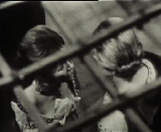
Fig. 9. Eavesdropping through grids
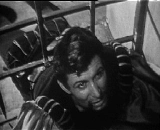
Fig. 10. Roderigo trapped by Iago
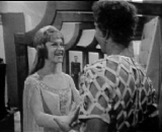
Fig. 11. Othello’s criss-crossed costume




Fig. 12. The metaphor of the net in Welles’s film
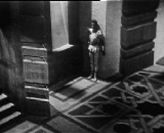
Fig. 13. The geometrical shape on the ground in Barma’s version
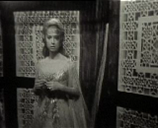
Fig. 14. The patterns on the wall echoing Desdemona’s handkerchief
15 It thus appears that this adaptation has to be examined in the second degree. This Othello broadcast on French television is a screen adaptation of Shakespeare’s text, but it is also permeated by another film, and seems to be the adaptation of an adaptation. Orson Welles’s film has come to feed other films and work as a filter, if not of the creation, at least of the reception of other Othello productions.
16 Barma’s film is not unique in its re-appropriation and reconfiguration of Welles’s Othello. In a volume devoted to Shakespeare’s productions in Asia, Richard Burt has explored the way Othello is embedded in the Indian film Saptapadi (dir. Ajoy Kar, 1961). [25] Ajoy Kar’s interracial love story, set in Bengal in pre-Independence India, features a stage performance of Othello murdering Desdemona, but the scene appears more as a film-within-the-film than as a play-within-the-film. [26] The on-film audience is never shown in the same shot as the stage actors and does not seem to belong to the same environment. This stage performance also looks to Welles’s Othello, with the same chiaroscuro lighting and whistling wind, and even turns the drawing of the curtain at the end of the scene into a very cinematic effect — the “wipe.” [27] The filmic framing of stage Shakespeare is thus disrupted by an already mediatized, cinematic Shakespeare. Burt identifies a decentring phenomenon: citing Welles’s Othello in Saptapadi displaces the production of the play and takes it beyond an English Shakespeare, towards an American Shakespeare. With Barma’s film, the same phenomenon of Shakespearean decentring may be witnessed, in which the point of reference shifts from Shakespeare’s texts to canonical Shakespearean films, such as Welles’s or Olivier’s. Another form of decentring can be identified in this version of Othello through the examination of the French (post-)colonial context.
III. “Killed by a nigger:” Othello and the colonial issue in France
17 In an article devoted to Saptapadi, Paromita Chakravarti underlines Othello’s capacity to crystallize racial issues specific to colonial or post-colonial societies:
The exploration of racial issues in Othello has made it a useful and enabling text for racially segregated cultures and more generally for colonial and post-colonial readers, adapters and performers of Shakespeare. Othello’s character provides a mouthpiece for the consciousness of a denigrated people in the unequal and exploitive cultural encounter with Europe. [28]
18 Whether one considers Shakespeare’s text as conveying or condemning racial segregation, the character of Othello as embodying a common racial identity or representing a racial exception, the play puts the racial issue to the fore and calls for adaptations to other contexts, notably (post-)colonial ones. Barma’s film was broadcast in January 1962, just a few months before the end of what France called the “events” (to avoid saying “war”) in Algeria, bringing a particular resonance to this production of Othello. Sorano’s words, quoted in the magazine Télérama, show that, for him, to play Othello at that very moment was far from being trivial [29] and that the heart of his role resided in this racial issue:
Nigger, filthy nigger: this was their favourite insult in high school. Because his father’s family comes from the colonies and because he lived in Africa for a long time, 10-year-old Daniel Sorano already knows what racism means. At the same time, he discovers Othello. He has heard that, in this play by Shakespeare, the hero is a black man. He reads it. And the little boy is moved, heart and soul. He is convinced that Othello’s misfortune comes from his being black. […] Thirty years after this first reading, actor Daniel Sorano hasn’t changed his mind. According to him, Othello is less a tragedy of jealousy than a racial tragedy. [30]
19 Daniel Sorano’s make-up turning him into a dark-skinned Othello (see Fig. 15) only makes visible the difference and segregation that the actor felt throughout his life. The translation used for the film reinforces this identification with the role since the word “nigger” is often repeated instead of the word “Moor”. While “Moor”/“Maure”, for a French audience, somehow erases the character’s skin colour, notably through its homophony with “death” (mort), the term “nigger” makes the racial issue inescapable and even shocks the ears of the contemporary spectators. This identification of the actor with the character over this racial issue is made explicit by Sorano in the Télérama article: “It’s no longer Sorano speaking, it’s not even Shakespeare, it’s Othello, the great Moor of Venice. ― Yes, it’s true, admits Sorano, I am Othello.” [31]

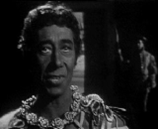
Fig. 15. Actor Daniel Sorano as himself and in blackface for the role of Othello
20 In such a context, we can only be struck by “Michel” Cassio’s fairness (see Fig. 16) and by Desdemona’s long blond hair and white skin, [32] which contrast with Othello’s swarthy face. In her playfulness and naughtiness, this Desdemona (see Fig. 17) looks like a new Sissi — the nineteenth-century Austrian queen made famous on screen by Romy Schneider in the mid-1950s in Ernst Marischka’s three films. In the scene in which Othello complains of a headache, she replies impishly: “Of course, you haven’t had any sleep.” This line leaves no doubt regarding the consummation of the marriage in this version of the play.
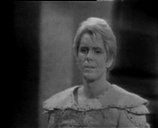
Fig.16. A fair Cassio
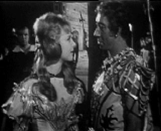

Fig. 17. Francine Bergé as Desdemona recalling Romy Schneider’s performance as Sissi
21 The year 1962 represents a key moment in French decolonization, between two waves of major migrations. With the massive arrival of the repatriates from Indochina, Egypt, Morocco and Tunisia from 1956 to 1961, France had just experienced its first post-colonial wave of immigration, with half a million people arriving in the home country. If it is true to say that the vast majority of repatriates from Algeria arrived during the exodus of Summer 1962, the number of repatriates settling in France before 1962 was not insignificant: towards the end of 1961, the number of people leaving for the home country had already started to rise, although the hope of a war settlement in favour of the French people of Algeria slowed the flow down. The exodus from Algeria brought, in five years, as many people as during the previous migrations related to French decolonization. [33]
22 A few months before the exodus of the French who lived in Algeria (“Pieds-noirs”) and of the Muslims who had fought alongside the French, who would all have to choose between “a suitcase or a coffin,” [34] then face discriminations looking for jobs or accommodations, Iago’s words to Roderigo, “Let the Moor return to Mauritania,” [35] is charged with a prophetic content, while revealing how migrants from Indochina and Maghreb were treated in France. The boat-shaped set also suggests a society haunted by, and watching out for, exodus.
23 The Télé 7 Jours article introducing the Othello broadcast positions Sorano’s Othello among a traditional line of Othellos (see Fig. 18) in which all the actors are in blackface: Orson Welles, Pierre Brasseur, [36] Serge Bondartchouck, and many others — white men made up into black men — have marked the part with hybridity, which seems to evoke the in-between status of the women and men called “Pieds-noirs.” Even though the exodus has yet to happen when the TV film is broadcast, the “events” in Algeria are undeniably part of the conditions of creation and reception. In 1962, a few months after this Othello was made, Daniel Sorano died at 41, which gives the film a testamentary significance.
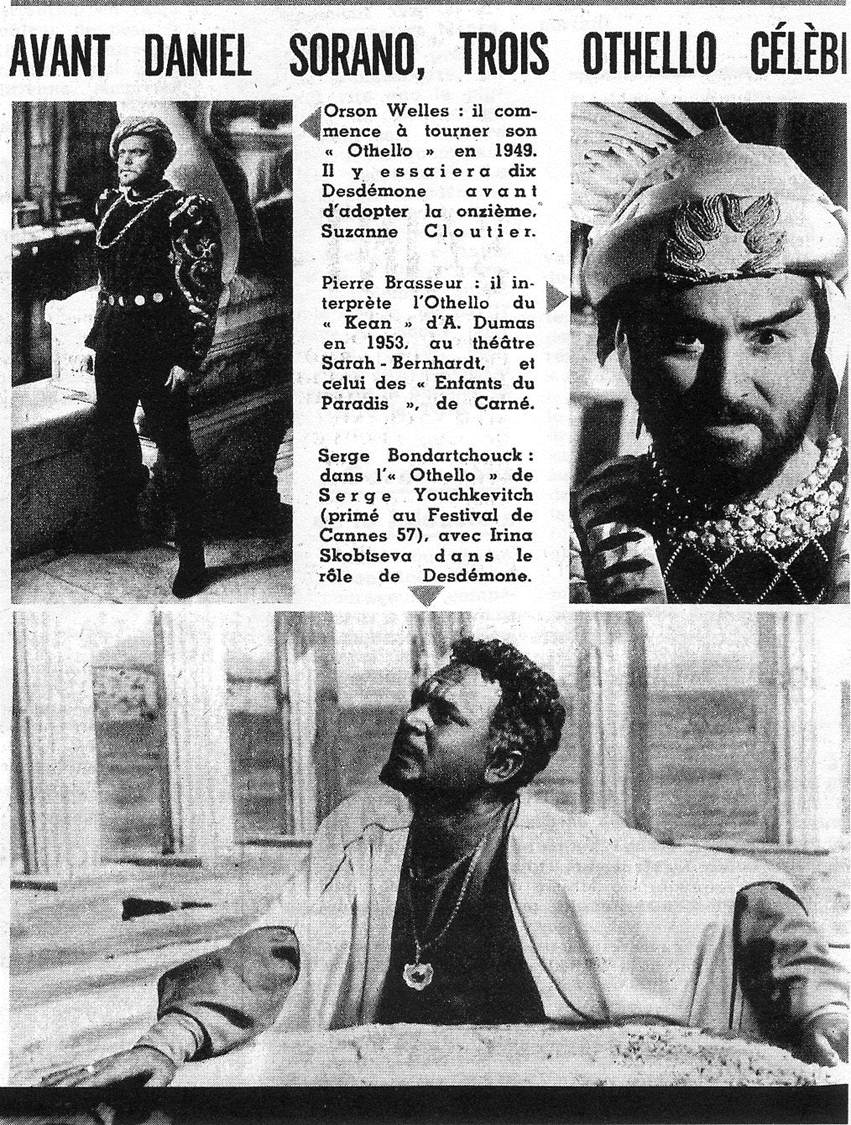
Fig. 18. The Télé 7 Jours article: Othellos in blackface
Conclusion
24 What vision emerges from this French version? What comes out of this film is mainly its hybrid dimension. “Hybridity” is linked to the notion of “bastardy,” of blood mixing — the progeny from two different species. This film is hybrid in its status, between the televisual production, the filming of a stage performance and the theatre without an audience (which is typical of the “dramatique” genre). Its hybridity also resides in its “à la” aesthetics, citing Orson Welles’s 1952 film and thus precluding any single and unambiguous reading of the play. The “à la” aesthetics operates as a screen between ourselves and a clear-cut vision that we could identify, as we watch Barma’s film informed by a Shakespeare mediated by Welles. Our perception of the film is filtered by this cumbersome legacy but also by the comments on the film. In 1962, French television reflected upon itself, upon what it produced and the way it produced it. Many elements of interpretation stem from the critical and biographical discourses that complemented and announced the broadcast and brought to the foreground the traditional readings of the play as domestic tragedy or racial drama.
Filmography
Othello, 1962
Director: Claude BARMA
Adaptation: Georges NEVEUX
Photography: Jacques LEMARE
Setting: Marcel Louis DIEULOT
Cast
Othello: Daniel SORANO
Desdémone: Francine BERGÉ
Iago: Jean TOPART
Cassio: Michel LE ROYER
Roderigo: Roland RODIER
Brabantio: Henri ROLLAN
Ludovico: Alain NOBIS
Montano: Robert BOUSQUET
Gratiano: Roger TRECAN
Emilia: Nathalie NERVAL
Le Doge: William SABATIER
Bianca: François GIRET
First senator: Pierre NÈGRE
Second senator: Jacques LALANDE
First gentleman: Louis LYONNAIS
Second gentleman: Jean MAUVAIS
Bibliography
- BATE, Jonathan. The Genius of Shakespeare. London: Picador, 1997.
- BURT, Richard. “All that remains of Shakespeare in Indian film.” In Dennis Kennedy and Yong Li Lan (eds). Shakespeare in Asia: Contemporary Performance. Cambridge: Cambridge University Press, 2010, pp. 73-108.
- CHAKRAVARTI, Paromita. “Modernity, Postcoloniality and Othello: the case of Saptapadi.” In Pascale Aebischer, Edward J. Esche and Nigel Wheale (eds). Remaking Shakespeare, Performance Across Media, Genres and Cultures. Houndmills, Basingstoke: Palgrave, 2003, pp. 39-55.
- DELAVAUD, Gilles. L’Art de la télévision. Histoire et Esthétique de la dramatique télévisée (1950-1965). Paris/Bruxelles: de Boeck, collection Medias Recherches, 2005.
- DAVIES, Antony, Filming Shakespeare’s plays. Cambridge: Cambridge University Press, 1988.
- DÉPRATS, Jean-Michel. Trans. Othello. Malakoff: dérives-solin, 1984.
- DUCIS, Jean-François. Othello ou le More de Venise. Tragédie en cinq actes, représentée pour la première fois en 1792. In Œuvres de J.-F. Ducis. Paris: Au bureau des éditeurs, 1830. Vol. 3, pp. 5-108.
- FANON, Frantz. Peau Noire, Masques Blancs. Paris: Seuil, 1952.
- GARDETTE, Raymond. Compte rendu des “Journées Shakespeare” de novembre 1979. Ed. Marie-Thérèse Jones-Davies. Paris: Société Française Shakespeare, 1980, pp. 24-31. Online: http://www.societefrancaiseshakespeare.org/docannexe/fichier/1115/1979-16et17nov.pdf (accessed 6 January 2013).
- MOUMEN, Abderahmen. “Introduction.” In Entre histoire et mémoire: Les Rapatriés d’Algérie. Dictionnaire bibliographique. Nice: Éditions Gandini, 2003, pp. 9-22.
- NEVEUX, Georges. Trans. Othello. Paris: Gallimard, Collection Blanche, 1944.
- PUJANTE, Ángel-Luis & Keith GREGOR (eds). Hamlet en España: Las cuatro versiones neoclásicas. Colección Textos Recuperados. Salamanca: Ediciones Universidad de Salamanca, 2010.
- ROTHWELL, Kenneth S. A History of Shakespeare on Film. Cambridge: Cambridge University Press, 1999.
- WILLEMS, Michèle. “The mouse and the urn: Re-visions of Shakespeare from Voltaire to Ducis.” Shakespeare Survey 60 (2007): 214-222.
Notes
1. This paper stems from a research programme on Shakespearean adaptations for French television, a programme which is now part of a more global project on “Shakespeare on Screen in Francophonia” led by the IRCL research centre at the university of Montpellier 3.
2. For these statistics, see: http://unesdoc.unesco.org/images/0013/001359/135951fb.pdf (p. 27) (accessed 5 January 2013).
3. Located in the buildings of the Bibliothèque Nationale de France in Paris. The film can also be viewed at the Maison Jean Vilar in Avignon (France) and can be purchased for download on the Inathèque website: http://www.ina.fr/art-et-culture/arts-du-spectacle/video/CPF86628574/othello.fr.html (accessed 6 January 2013).
4. Our translation from the French “Daniel Sorano, ce soir, étranglera Francine Bergé.”
5. See Stuart Sillars’s “Ars et Veritas” in Shakespeare, Time and the Victorians: A Pictorial Exploration. Cambridge: Cambridge University Press, 2012, pp. 152-87 and Shakespeare and the Victorians. Coll. Oxford Shakespeare Topics. Oxford: Oxford University Press, 2013, pp. 101-4.
6. Barma’s Macbeth can be viewed at the Maison Jean Vilar, Avignon. Sorano played in other screen adaptations of Elizabethan plays, available at the Maison Jean Vilar: Arden of Faversham (1960, dir. Marcel Bluwal); Volpone (1954, dir. Stellio Lorenzi). There are also two documentaries on Daniel Sorano (which can be viewed at the Maison Jean Vilar): “Daniel Sorano et le théâtre” (director and narrator Claude Dagues, FR3 Midi-Pyrénées Languedoc-Roussillon, 1985, 27mn) and “Daniel Sorano et la télévision” (director and narrator Claude Dagues, FR3 Midi-Pyrénées Languedoc-Roussillon, 1985, 27mn).
7. This part won him the nickname “Sorano of Bergerac.”
8. Our translation from the French “L’art de la télévision pour moi (mais peut-on parler d’art?) c’est avant tout d’intéresser les gens, de les accrocher, de les forcer à regarder, à écouter.”
9. He also played Lauratiot in L’Embrumé (1980), a French TV adaptation of Hamlet.
10. See Gilles Delavaud, L’Art de la télévision. Histoire et Esthétique de la dramatique télévisée (1950-1965), Paris/Bruxelles : de Boeck, collection Medias Recherches, 2005.
11. Our translation from the French “Quand les gens rentrent de leur travail, ils ont parfois envie de s’amuser, de voir quelque chose de drôle. Et on leur offre Othello. Alors il faut les accrocher, il faut que, dès les premières scènes, ils se sentent pris, emportés par la pièce. […] Il faut de temps en temps donner un coup de poing dans l’écran, les réveiller. Et pour cela il y a le direct. Une émission en direct est souvent moins bonne techniquement mais elle vit beaucoup plus. C’est angoissant, mais c’est passionnant. L’acteur ne voit pas le public, mais il sait qu’il est là. Et il joue alors comme le trapéziste qui travaille sans filet. Et parce qu’il prend des risques, il n’en joue sans doute que mieux. Le direct c’est comme un match de boxe. C’est gagné ou perdu en un soir. Et c’est la victoire ou la chute sans aucun recours.”
12. Télérama 627, 21-27 January 1962, p. 7 (article by André Alter). Our translation from the French “Il n’y a qu’une scène de cette pièce qui me gêne. C’est au moment où Othello, devant tous, chasse sa femme d’une phrase cinglante. Cette cruauté, je ne parviens pas à la rendre. C’est pour cela que je suis heureux de jouer la pièce en direct. Car nous n’en avons tourné que le début. Le reste sera télévisé en direct. Et je crois que la progression de l’action m’aidera à devenir l’Othello cruel de la scène.”
13. In French: “Elle a trompé son père et te trompera à ton tour.”
14. The adaptation-translation by Georges Neveux was published in the Collection Blanche by Gallimard in 1944. It was performed for the first time in 1950. See Proceedings of the Congrès de la Société Française Shakespeare, 1979, online: http://shakespeare.revues.org/1114 (accessed 6 January 2013), p. 29, where Raymond Gardette writes, in a note on the translations of Othello, about Neveux’s translation: “La prose légère et souple de Neveux, à mille lieues de la tentative de Vigny, s’allie dans la scène du Chant du Saule, à des rythmes inspirés d’Apollinaire, proches, ici aussi, du goût contemporain. Il semble que la scène du Chant du Saule soit plus réussie que l’ensemble de la pièce — mais la remarque vaut pour toutes les representations d’Othello.”
15. Our translation from the French “Lorsque, le 26 novembre 1792, Jean-François Ducis présente pour la première fois au public français ‘Othello ou le More de Venise,’ une pièce écrite près de deux siècles auparavant par William Shakespeare, il a très peur. Et il a raison. Le goût des amateurs de théâtre est alors à Marivaux ou Beaumarchais, aux répliques piquantes, aux sentiments élégants, aux délicates ‘moralités’ en dentelle. Ducis sait fort bien que le public ne supportera pas la brutalité des personnages imaginés par celui que nous considérons, aujourd’hui, comme le plus grand génie dramatique de tous les temps. Passe encore qu’Othello ait la peau noire et qu’il commande cependant les troupes de la République de Venise, passe encore, même, qu’il tue […] mais comment expliquer la noirceur de cet affreux Iago […]? Le bon Ducis prend donc soin de présenter une version d’Othello très ‘édulcorée’ […]. Ce n’est pas l’adaptation de Ducis qui vous sera présentée ce soir à la TV mais la traduction de George Neveux qui s’efforce avec bonheur de traduire le plus fidèlement possible en français moderne l’esprit de Shakespeare.”
16. See his address to the reader (“avertissement”): “Je suis bien persuadé que si les Anglais peuvent observer tranquillement les manœuvres d’un pareil monstre sur la scène, les Français ne pourraient jamais un moment y souffrir sa présence, encore moins l’y voir développer toute l’étendue et toute la profondeur de sa scélératesse. C’est ce qui m’a engagé à ne faire connaître le personnage qui le remplace si faiblement dans ma pièce, que tout à la fin du dénoûment […]. Je me suis bien gardé de le faire paraître du moment qu’il est connu, du moment que j’ai révélé au public le secret affreux de son caractère,” Jean-François Ducis, Othello ou le More de Venise. Tragédie en cinq actes, représentée pour la première fois en 1792, in Œuvres de J.-F. Ducis, Paris: Au bureau des éditeurs, 1830, 5 vols, vol. 3, pp. 9-10. (“I am convinced that if the English can quietly watch the plots of such a monster on stage, the French could never bear his presence, and even less see him display all the extent and depth of his villainy. That is what incited me to introduce the character that so feebly replaces him in my play only at the very end. I have avoided to show him to the audience from the moment he is uncovered, from the moment I have revealed to the audience the abject secret of his character” — our translation).
17. “Comme je l’ai fait imprimer avec les deux dénouements, les directeurs des théâtres seront les maîtres de choisir celui qu’il leur conviendra d’adopter”, Ducis, p. 171 (“As I had it printed with two dénouements, stage managers will be able to choose which of the two is the more suitable” — our translation).
18. On Ducis’s influence, not only in France but all through Europe, see the works of Michèle Willems (especially “Hamlet in France,”
http://triggs.djvu.org/global-language.com/ENFOLDED/index.php?page=texts.php?sects=globalh (accessed 5 August 2014)), as well as the recent volume Hamlet en España: Las cuatro versiones neoclásicas. Ed. Ángel-Luis Pujante and Keith Gregor. Colección Textos Recuperados. Salamanca: Ediciones Universidad de Salamanca, 2010.
19. In French: “fardeau tragique sur ce lit.”
20. See Antony Davies’s chapter on Welles’s Othello in Filming Shakespeare’s plays. Cambridge: Cambridge University Press, 1988, p. 105: “While the disruption of the chronological order sequence so forcibly announced at the start of the film shifts the mode from the narrative to the analytical, it is questionable whether, by virtue of the selective nature of the medium, it is possible in a dramatic adaptation to transcend entirely the narrative function of the camera.”
21. Othello. Trans. Jean-Michel Déprats. Malakoff: Dérives-solin, 1984, p. 52.
22. Kenneth S. Rothwell, A History of Shakespeare on Film. Cambridge: Cambridge University Press, 1999, p. 80.
23. “Iago’s cage becomes the locus classicus for the rest of the movie” (Rothwell, p. 81).
25. On this film, see Paromita Chakravarti’s essay, “Modernity, Postcoloniality and Othello: the case of Saptapadi.” In Pascale Aebischer, Edward J. Esche and Nigel Wheale (eds). Remaking Shakespeare, Performance Across Media, Genres and Cultures. Houndmills, Basingstoke: Palgrave, 2003, pp. 39-55.
26. Richard Burt, “All that remains of Shakespeare in Indian film.” In Dennis Kennedy and Yong Li Lan (eds). Shakespeare in Asia: Contemporary Performance. Cambridge: Cambridge University Press, 2010, pp. 73-108, p. 86.
27. The clip can be viewed at https://www.youtube.com/watch?v=PnlXVJcQPOg (accessed 5 January 2013).
29. On the issue of race and colonization, see Frantz Fanon, Peau Noire, Masques Blancs. Paris: Seuil, 1952. Fanon’s text is notably mentioned by Jonathan Bate in The Genius of Shakespeare. London: Picador, 1997, pp. 242ff. Many thanks to Florence Cabaret for this reference.
30. Télérama 627, 21-27 January 1962, pp. 7 & 17. Our translation from the French “Nègre, sale nègre: c’était l’injure favorite de ses camarades de collège. Parce que la famille de son père est d’origine coloniale et que celui-ci a longtemps vécu en Afrique, Daniel Sorano, à dix ans, connaît déjà le racisme. En même temps, il découvre Othello. Il a entendu que, dans cette pièce de Shakespeare, le héros est un Noir. Il la lit donc. Et il est touché au cœur. Dans son âme de petit garçon; il est persuadé qu’Othello n’a tant de malheurs que parce qu’il est Noir. […] Trente ans plus tard, Daniel Sorano acteur n’a pas changé d’avis. Plus qu’un drame de la jalousie, Othello est pour lui un drame racial.”
31. Télérama, p. 17. Our translation from the French “Ce n’est plus Sorano qui parle, ce n’est plus Shakespeare même, c’est Othello, le roi More de Venise. ‘― Oui c’est vrai,’ avoue Sorano, ‘je suis Othello’.”
32. “This woman that was so blond, so sweet, so white” (“Cette femme si blonde, si douce, si blanche”), Télérama, p. 17.
33. See Abderahmen Moumen. “Introduction.” Entre histoire et mémoire: Les Rapatriés d’Algérie. Dictionnaire bibliographique. Nice: Éditions Gandini, 2003, pp. 9-22.
34. This slogan (“La valise ou le cercueil”) was famously uttered by some Algerian nationalists in 1961-62, to drive the “Pieds-noirs” away.
35. “Le Maure retourne en Mauritanie.”
36. Télé 7 Jours, 20-26 janvier 1962, p. 22: “Orson Welles: il commence à tourner son ‘Othello’ en 1949. Il y essaiera dix Desdémone avant d’adopter la onzième, Suzanne Cloutier;” “Pierre Brasseur: il interprète l’Othello du ‘Kean’ d’A. Dumas en 1953, au théâtre Sarah-Bernhardt et celui des ‘Enfants du Paradis’, de Carné;” “Serge Bondartchouck dans l’Othello de Serge Youchkevitch (primé au festival de Cannes 57) avec Irina Skobtseva dans le rôle de Desdémone.” (“Orson Welles: he started shooting his Othello in 1949. He will try ten Desdemonas before choosing the eleventh, Suzanne Cloutier; Pierre Brasseur: he played Othello in A. Dumas’s Kean in 1953, at the Théâtre Sarah Bernhardt and the Othello of Carné’s film Les Enfants du Paradis; Serge Bondartchouck in Serge Youchkevitch’s Othello (rewarded at the Cannes Festival in 1957) with Irina Skobtseva in the role of Desdemona”).
How to cite
HATCHUEL, Sarah & Nathalie VIENNE-GUERRIN. "‘O monstrous:’ Claude Barma’s French 1962 TV Othello." In Nathalie Vienne-Guerrin & Patricia Dorval (eds). Shakespeare on Screen in Francophonia: The Shakscreen Collection 3. Montpellier (France), IRCL, Université Paul-Valéry/Montpellier 3, 2014. Online: http://www.shakscreen.org/analysis/barma_othello/ (last modified August 15, 2014).
Contributed by Sarah HATCHUEL Nathalie VIENNE-GUERRIN
<< back to top >>



